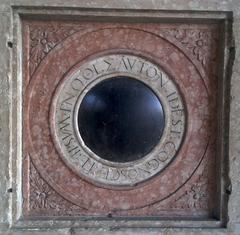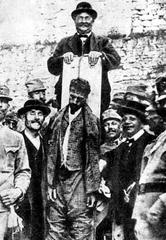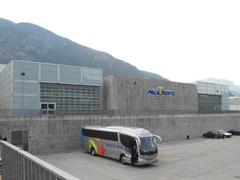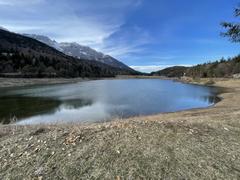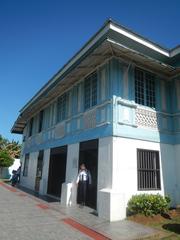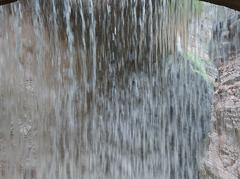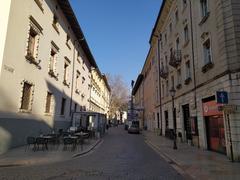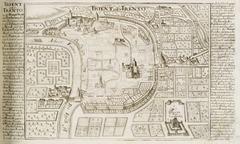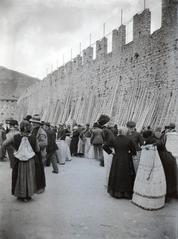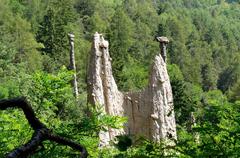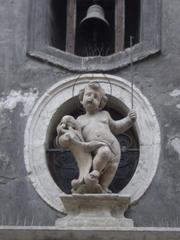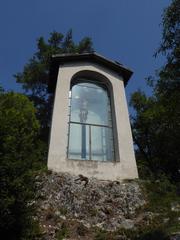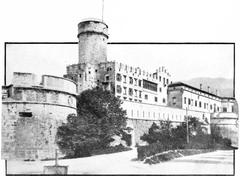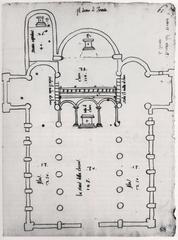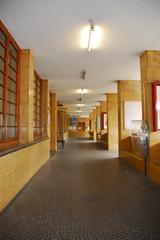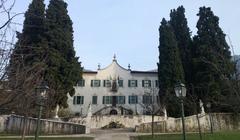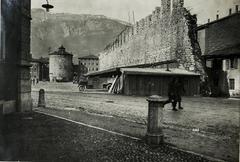Visiting Forte Bus de Vela: Tickets, Hours, History, and Travel Tips
Date: 01/08/2024
Introduction
Forte Bus de Vela, also known as Straßensperre Bus de Vela, is a notable historical landmark located near Trento, Italy. Constructed between 1860 and 1862 by the Austro-Hungarian Empire, this fort was part of a strategic network of defensive structures designed to protect key routes and territories. Over the years, Forte Bus de Vela has witnessed significant historical events, including its role during World War I and World War II, when it transitioned from Austro-Hungarian to Italian control and later served as a munitions depot and logistical support facility. Today, it stands as a symbol of historical preservation and cultural significance, attracting visitors from around the world. This comprehensive guide aims to provide visitors with all the necessary information for a memorable visit to Forte Bus de Vela, including its history, visiting hours, ticket information, travel tips, and nearby attractions. For more detailed information, please visit the official Cultura Trentino website.
Table of Contents
- Introduction
- History of Forte Bus de Vela
- Visiting Forte Bus de Vela
- What to See
- Guided Tours and Educational Programs
- Nearby Attractions
- Practical Information
- Tips for a Memorable Visit
- FAQ
- Visit and Stay Up to Date
- Conclusion
History of Forte Bus de Vela
Construction and Early Use
Forte Bus de Vela, constructed between 1860 and 1862, was part of a series of defensive structures designed to protect strategic routes leading to Trento. The fort was intended to control and defend the road connecting Trento to the Adige Valley, a crucial passageway for military and trade movements. It was built from red limestone and strategically integrated into the rocky landscape, making it a formidable barrier against advancing forces. Initially, the fort was armed with two smoothbore cannons, each weighing 24 pounds.
Role During the Austro-Hungarian Period
During its early years, Forte Bus de Vela was a key component of the Austro-Hungarian Empire’s defensive network, which included other significant structures such as Forte Belvedere Gschwent and Forte Strino. These forts collectively protected the empire’s southern borders from potential Italian incursions. The fort’s location at the confluence of the Vela stream and the Adige River provided natural defensive advantages. It included living quarters, kitchens, food and ammunition storage, and armed casemates equipped with cannons and machine guns.
Transition to Italian Control
After World War I, Trentino, including Forte Bus de Vela, was annexed by the Kingdom of Italy. The fort’s role shifted to a logistical support facility, serving as a road control point and a munitions depot for the Italian Army. During World War II, it was occupied by German forces, highlighting its continued strategic importance.
Post-War Period and Restoration
Following World War II, the fort fell into neglect. However, recognizing its historical value, the Autonomous Province of Trento acquired it in the early 1990s. A comprehensive restoration project was initiated in 2006 and completed in 2011, reopening the fort to the public as a historical site and cultural venue.
Visiting Forte Bus de Vela
Visiting Hours and Tickets
Forte Bus de Vela is open to visitors from April to November, with free admission. Guided tours are available for groups of at least ten people, providing in-depth insights into the fort’s history and significance. For the most current visiting hours and ticket information, please check the official Cultura Trentino website.
Travel Tips
The fort is easily accessible from Trento, located just a few kilometers from the city center. Visitors can take bus number 1 towards Sopramonte and stop at the nearest station. For more detailed travel information, visit the Visit Trentino website.
What to See
Restored Quarters
The fort has been meticulously restored to reflect its original state, including living quarters, kitchens, and ammunition depots.
Casemates and Armaments
Visitors can explore the casemates equipped with cannons and machine guns, providing insight into the fort’s defensive capabilities.
Interactive Exhibits
The fort features multimedia tables, dynamic models, and sensory installations that illustrate the themes of the Great War and the Trentino fortifications (Visit Trentino).
Explanatory Panels
Detailed panels provide historical context and information about the fort’s construction, use, and significance during various conflicts.
Guided Tours and Educational Programs
For a more in-depth understanding, guided tours are available. These tours are led by knowledgeable guides who provide detailed explanations of the fort’s history and significance. Educational programs are also offered for school groups and other organizations, making it an excellent destination for learning about military history and engineering.
Nearby Attractions
Le Gallerie – History Museum
Located about 55 minutes’ walk from the fort, this museum offers a unique experience with exhibits housed in former road tunnels (Trek Zone).
Museo Storico degli Alpini
A 52-minute walk from the fort, this museum is dedicated to the history of the Alpini military corps (Trek Zone).
Doss Trento
A small hill offering panoramic views of Trento and the Adige River, located 52 minutes’ walk from the fort (Trek Zone).
Lago di Terlago
A natural lake about 35 minutes’ walk from the fort, perfect for a relaxing break (Trek Zone).
Practical Information
Weather
The weather in Trento can vary significantly throughout the year. Summers are generally warm, while winters can be cold and snowy. It is advisable to check the weather forecast before your visit and dress accordingly (Visit Trentino).
Accessibility
The fort has been restored with accessibility in mind, but some areas may still be challenging for visitors with mobility issues. It is recommended to contact the fort in advance to discuss any specific needs.
Facilities
Basic facilities such as restrooms and a small visitor center are available on-site. There are also picnic areas where visitors can enjoy a packed lunch.
Tips for a Memorable Visit
Plan Ahead
Check the opening hours and make any necessary reservations in advance, especially if you are planning a group visit or guided tour.
Wear Comfortable Shoes
The fort involves a fair amount of walking, including some uneven terrain. Comfortable, sturdy shoes are recommended.
Bring a Camera
The fort and its surroundings offer numerous photo opportunities, from the historical structures to the scenic views of the Adige Valley.
Stay Hydrated
Especially during the summer months, bring water to stay hydrated as you explore the fort.
Respect the Site
As a historical site, it is important to respect the fort and its exhibits. Follow any posted guidelines and do not touch or disturb the artifacts.
FAQ
What are the visiting hours for Forte Bus de Vela?
- Summer Season: 10 AM to 6 PM on weekends.
- Winter Season: Check in advance for specific hours.
Is there an admission fee?
- Admission is generally free, but donations are welcome.
How do I get to Forte Bus de Vela?
- By car, public transport, or hiking/biking from Trento.
Visit and Stay Up to Date
For more information and updates, download our mobile app Audiala, check out our other related posts, or follow us on social media.
Conclusion
Visiting Forte Bus de Vela offers a unique opportunity to delve into the rich military history of Trento and the broader European context. From its construction in the mid-19th century to its strategic roles during major conflicts and eventual restoration, the fort encapsulates a significant historical narrative. Today, it stands not only as a preserved historical site but also as a cultural venue that educates and inspires visitors. With its extensive exhibits, guided tours, and picturesque surroundings, Forte Bus de Vela provides a comprehensive and enriching experience for history enthusiasts and casual visitors alike. Whether exploring the restored quarters, learning about the fort’s defensive capabilities, or enjoying nearby attractions such as the Le Gallerie – History Museum and Doss Trento, a visit to Forte Bus de Vela promises to be both educational and enjoyable. For the latest updates and more detailed visitor information, be sure to check the official Visit Trentino website.
References
- Cultura Trentino, n.d., Cultura Trentino
- Visit Trentino, n.d., Visit Trentino
- Trek Zone, n.d., Trek Zone
- Trip.com, n.d., Trip.com
